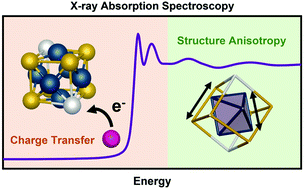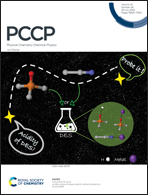X-ray absorption spectroscopy insights on the structure anisotropy and charge transfer in Chevrel Phase chalcogenides†
Abstract
The electronic structure and local coordination of binary (Mo6T8) and ternary Chevrel Phases (MxMo6T8) are investigated for a range of metal intercalant and chalcogen compositions. We evaluate differences in the Mo L3-edge and K-edge X-ray absorption near edge structure across the suite of chalcogenides MxMo6T8 (M = Cu, Ni, x = 1–2, T = S, Se, Te), quantifying the effect of compositional and structural modification on electronic structure. Furthermore, we highlight the expansion, contraction, and anisotropy of Mo6 clusters within these Chevrel Phase frameworks through extended X-ray absorption fine structure analysis. Our results show that metal-to-cluster charge transfer upon intercalation is dominated by the chalcogen acceptors, evidenced by significant changes in their respective X-ray absorption spectra in comparison to relatively unaffected Mo cations. These results explain the effects of metal intercalation on the electronic and local structure of Chevrel Phases across various chalcogen compositions, and aid in rationalizing electron distribution within the structure.



 Please wait while we load your content...
Please wait while we load your content...